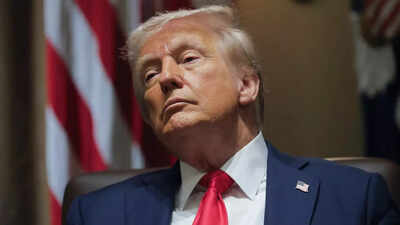ARTICLE AD BOX

More than a hundred campuses across the United States witnessed coordinated demonstrations on Friday, as students, faculty, and staff rallied against what they described as the Trump administration’s political encroachment into higher education.The protests, marked the first in a series of nationwide actions that organisers plan to escalate into student and worker strikes next May Day, culminating in a general strike in 2028, The Guardian reports.The movement operates under the banner Students Rise Up, a coalition linking campus groups with national organisations such as the Sunrise Movement and the Campus Climate Network. Faculty unions including the American Association of University Professors (AAUP) and Higher Education Labour United joined the effort, signalling an unusual convergence of academic and labour interests.
Rejecting a ‘compact’ for compliance
At the centre of the protests lies opposition to what demonstrators call the administration’s “compact” — a proposed framework that would give universities preferential access to federal funding in exchange for adopting the government’s ideological priorities.So far, only one institution, the New College of Florida, has signed the compact after state legislators transformed it into a conservative stronghold.
Alicia Colomer of the Campus Climate Network said students and faculty were pushing back against an attempt to “turn universities into propaganda machines.” She added that campuses must remain spaces of independent thought, not instruments of political influence, The Guardian reports.
From Kansas to New York: Diverse demands, shared message
Across the country, students walked out of lectures, carried banners, and held teach-ins.At the University of Kansas, protestors demanded that administrators divest from weapons manufacturers and Israel, refuse cooperation with the Immigration and Customs Enforcement (ICE), and expand gender-affirming housing.
At Duke University, demonstrators called for higher wages for campus workers and stronger protections for immigrant, transgender, and international students.At Brown University in Rhode Island, one of the first institutions to reach a settlement with the administration earlier this year, protesters invited passersby to imprint painted handprints on a banner of demands. Nearby, faculty members delivered open-air lectures on the history of authoritarianism.Simon Aron, a sophomore and co-president of Brown Rise Up, told The Guardian that the administration’s campaign had underestimated student resolve. “Trump came to our community thinking we could be bullied out of our freedom,” he said. “He was wrong.”
Targeting influence and ideology
In New York City, students and faculty from multiple institutions gathered outside the headquarters of Apollo Global Management to protest against its chief executive, Marc Rowan, a major Trump donor and one of the architects of the compact.Organisers cited Rowan’s stake in the online University of Phoenix, which they described as a driver of student debt, and his efforts to reframe civil rights law to penalise universities over criticism of Israel.Rowan, in a recent opinion piece for The New York Times, defended his position, arguing that “American higher education is broken” and that “course correction must come from the outside.”Amy Offner, a historian at the University of Pennsylvania, told The Guardian that the protests reflect deeper anxiety over private influence in academia.
She said the movement’s broader purpose was to safeguard education “from the control of ultra-wealthy individuals,” adding that billionaires should not be determining what can or cannot be taught.
A test of unity and endurance
Todd Wolfson, president of the American Association of University Professors, told The Guardian that defending higher education now requires collective political strength. “There is only one way forward in saving higher education and democracy writ large,” he said.
“Students, faculty, staff — united.”Organisers see the rallies as both a protest and a rehearsal to build coordination across institutions before larger strike actions planned in the coming years.Whether the movement sustains momentum or is subdued by administrative pressures will determine not just the future of campus activism, but the shape of intellectual independence in American universities.

 4 hours ago
6
4 hours ago
6









 English (US) ·
English (US) ·